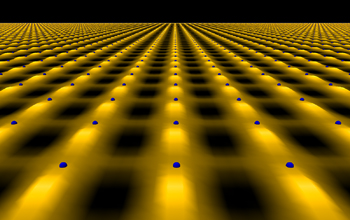Multimedia Gallery
Asymmetric Electron Behavior in High-temperature Superconductors
Superconductors conduct electricity without any energy loss and could be ideal for many energy related applications. Unfortunately, even high-temperature superconductors require very cold temperatures, which limit their use. However, these high-temperature superconductors do enter a mysterious, nearly-superconducting state called the "pseudogap phase" close to room temperature. Researchers at Cornell University have revealed for the first time, a directionality in the arrangement of electrons in this state.
This research was supported by the National Science Foundation's Division of Materials Research (grant DMR 05-20404). To learn more, see the NSF Discovery story Asymmetric Electron Behavior Discovered in High-temperature Superconductors. (Date of Image: 2010)
Credit: Kazuhiro Fujita, Cornell University
See other images like this on your iPhone or iPad download NSF Science Zone on the Apple App Store.
Images and other media in the National Science Foundation Multimedia Gallery are available for use in print and electronic material by NSF employees, members of the media, university staff, teachers and the general public. All media in the gallery are intended for personal, educational and nonprofit/non-commercial use only.
Images credited to the National Science Foundation, a federal agency, are in the public domain. The images were created by employees of the United States Government as part of their official duties or prepared by contractors as "works for hire" for NSF. You may freely use NSF-credited images and, at your discretion, credit NSF with a "Courtesy: National Science Foundation" notation.
Additional information about general usage can be found in Conditions.
Also Available:
Download the high-resolution JPG version of the image. (840 KB)
Use your mouse to right-click (Mac users may need to Ctrl-click) the link above and choose the option that will save the file or target to your computer.



